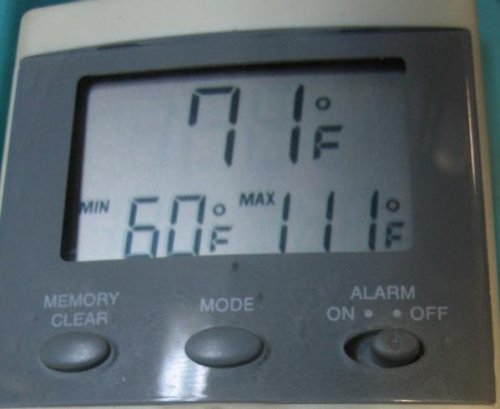Mike Fisher
Established Member
Room temp: 68F
Heated water temp: 111F
Mist temp 1" from nozzle: 71F
Median micron droplet size: 55 micron
Tubing length from pump to nozzle: 4.5 feet
Difference between reservoir and dispensed/atomized mist: -40F
Difference between room temp and dispensed/atomized mist: +3F
Pic shows 71F mist temp in top display,the stored maximum of 111F for the reservoir and the stored minimum for my cham room this month 60F.
YMMV
Heated water temp: 111F
Mist temp 1" from nozzle: 71F
Median micron droplet size: 55 micron
Tubing length from pump to nozzle: 4.5 feet
Difference between reservoir and dispensed/atomized mist: -40F
Difference between room temp and dispensed/atomized mist: +3F
Pic shows 71F mist temp in top display,the stored maximum of 111F for the reservoir and the stored minimum for my cham room this month 60F.
YMMV





